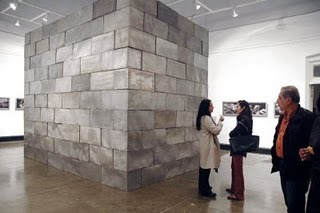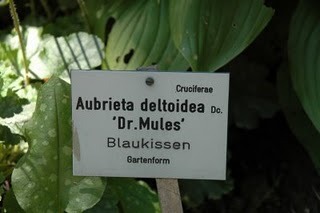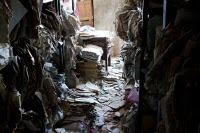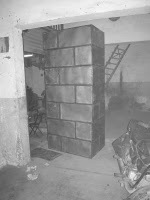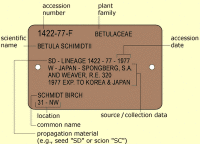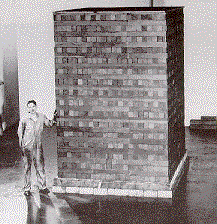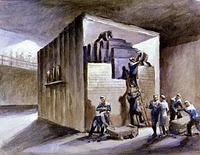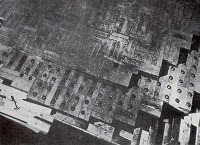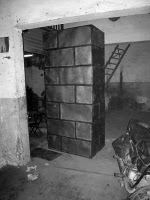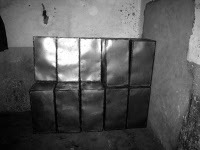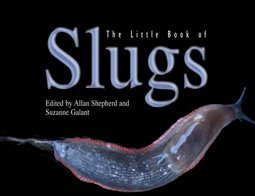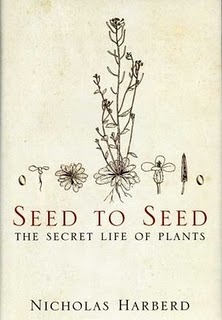HALF-LIFE
New Work
David Alesworth | Huma Mulji
Zahoor ul Akhlaq Gallery
National College of Arts | Lahore | Pakistan
me. This sculptural installation has other resonances, the formality of artists such as (late period) David Smith, Donald Judd and Karl Andre. This is slightly tongue in cheek reference to such minimalist concerns, through the lens of time and place. This is another prayer for sanity and peace, the way my “Two Bombs Kiss” was in the early ‘90’s. It was within the unshielded CP-1 reactor that plutonium production became a practical proposition. “Seaborg, (the discoverer of Plutonium) was asked to suggest a name for the element he had discovered. He decided to respect the tradition begun with uranium, named for the planet Uranus, then neptunium — the 93rd element, found in 1940 — for Neptune. As the next planet in the solar system was Pluto, he suggested the new element be called plutonium. No one thought to point out that the deity after which the planet Pluto was named was the Greek god of hell, the Roman god of death.” All the Plutonium on the planet now (a completely man‐made element) is around 50 tons; enough, if judiciously employed, to entirely destroy life on the earth. It is undoubtedly the most toxic substance in existence. I see “12.2.42” as part tribute (to scientific endeavor) and part warning (of the imperfect nature of mankind’s knowledge). The smallness of mankind’s achievements set against the vastness of creation. The ultimate failure of all technologies and civilization itself. It is a Vanitas sculpture. It critiques the arrogance of scientific knowledge. I half suspect this world will be sucked through the eye of an atom sized black‐hole, produced in the new Cern accelerator experiements. What a suitable ending it would be for this planet, wrecked as it is, by mankind’s insatiable greed. The units are identical but also quite distorted from the heat of their welding. The proportions of 14 x 14 x 28 inches directly address the scale of one’s body. I investigated other sizes and ratios to arrive at this. It is to do with one’s span. I realize these are very much the concerns of the early minimalists, like Caro, who was once Henry Moore’s protégé. The idea of span and of being body‐scaled are terms that could be right out of Moore’s own vocabulary. Though such concerns are readily discernible in ancient Egyptian sculpture (all of the canonical works.) My undergraduate dissertation was on the cannon of proportion in ancient Egyptian sculpture. I welcome the “wobble” that sign or life. It’s the imperfection that makes energy flow in the work, something I’ve long used in my practice. A tension between stillness and movement. There’s a correlation between the persistence of an official record and that of radioactive waste. I’m thinking of Half-Life as the link between the forest of files (The Record Room Series), undying, unending and uncountable, and the beginning of the nuclear age. Taking Fermi’s first pile CP‐1 as the beginning of this as it was here that Plutonium was first produced, albeit in tiny quantities. On that day that CP-1 first went critical for only 28 minutes and Plutonium was produced in its nuclear flux. Leo Szilard lingered on the balcony until most people had left, then turned to Fermi, shook his hand, and said that he thought the day would go down as a “black day in the history of mankind.” This cube of steel boxes is as much a play with the proportions of the room and scale of the body as it is a reference to nuclear power. Waste from Chicago Pile1 was buried in nearby woodland, this was not a fortuitous beginning to the nuclear age.
about what the board calls a “Second Nuclear Age” marked by grave threats. The board also cited “escalating terrorism, and new pressure from climate change for expanded civilian nuclear power that could increase proliferation risks.” The Doomsday Clock is now set at seven minutes to midnight. The Doomsday Clock is a symbolic clock face that the Bulletin has maintained since 1947 at its headquarters on the campus of the University of Chicago. It uses the analogy of
the human race being at a time that is a “few minutes to midnight” where
midnight represents destruction by nuclear war. The decision to move the minute hand is made by the Bulletin’s Board of Directors in consultation with its Board of Sponsors, which includes 18 Nobel Laureates. The “Bulletin of the Atomic Scientists” was founded in 1945 by University of Chicago scientists who had worked on the Manhattan Project and were deeply concerned about the use of nuclear weapons and nuclear war.
“The Garden of Babel”

